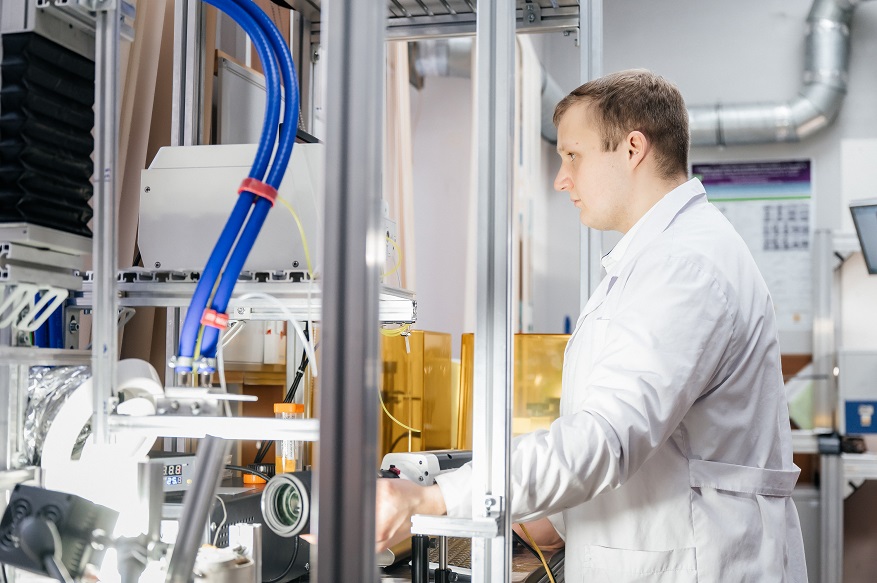Following their experiments, the researchers have derived an empirical expression that can be used to predict the process of layer-by-layer bioprinting applicable to tissue bioengineering technology, as well as to preselect the most effective polymer and its optimal concentration for specific purposes. In the future, it can potentially improve the performance of industrial and biomedical technologies based on the use of complex polymer fluids.
The research is supported by a grant from the Russian Science Foundation. Research findings have been published in the Langmuir (Q1; IF:4,331).
The effect of a liquid droplet collision with a wall underlies many technologies and practical applications. For example, the interaction of microgel particles with a surface determines the formation of a polymer layer on a nanofiber scaffold in the process of bioprinting. In Russian science, there have been quite a few studies of collision dynamics of homogeneous and heterogeneous liquids such as water and emulsions of different sizes. However, behavior patterns of a complex micron-sized gel particle with a liquid core and a solid shell have never been studied before.
Researchers from Tomsk Polytechnic University have studied the formation of a microgel layer on a homogeneous surface of sapphire glass and a nonwoven polymer membrane made by electrospinning. This is a collaborative project of the Butakov Research Center, Heat and Mass Transfer Laboratory of the School of Energy and Power Engineering and the Research School of Chemistry and Applied Biomedical Sciences, led by Associate Professor Maxim Piskunov.
During the experiments, the TPU researchers analyzed the process of sequential interaction of microgel particles with the surface and among themselves. As a result, they derived an empirical expression based on surface and liquid properties.To construct the test bench, we designed an electric circuit as its core part, operating based on the inverse piezoelectric effect. The in-air microfluidics technology implies formation of equally-spaced uniform-sized spherical particles. For this purpose, we apply a voltage by a certain signal to a piezo element, which vibrates and transmits the vibrating effect to the nozzle and the fluid flow. This destabilizes the microflow from the nozzle in a controlled way at the same location making it geometrically predictable. This approach upgrades the printing technology by making the process of microstructures formation, namely microgel layers, controllable,
The experiments were conducted on hydrophobic (water-repelling) surfaces. The researchers plan to extend the experiment to hydrophilic (absorbent) surfaces. New surface properties such as porosity, nanofiber diameter, distance between nanofibers, their location, and wettability will also be studied. This will broaden the scope of applications of the obtained fundamental and applied research findings.The derived expression will improve the bioprinting process. It is universal for calculations. Knowing only two variables, surface roughness and microgel gelation degree, we can use the expression to predict the maximum droplet/particle spreading diameter for different gel liquids and different surface roughness. Using the expression, we can calculate the areas of biopolymer layer formation with thickness of one and two particles. In the future, this technology can be used for mobile single-stage formation of an area-defined layer of microgel container particles seeded, for example, with living cells,
